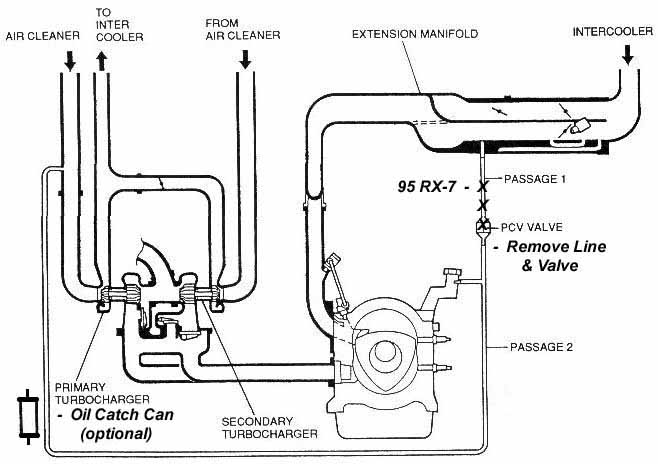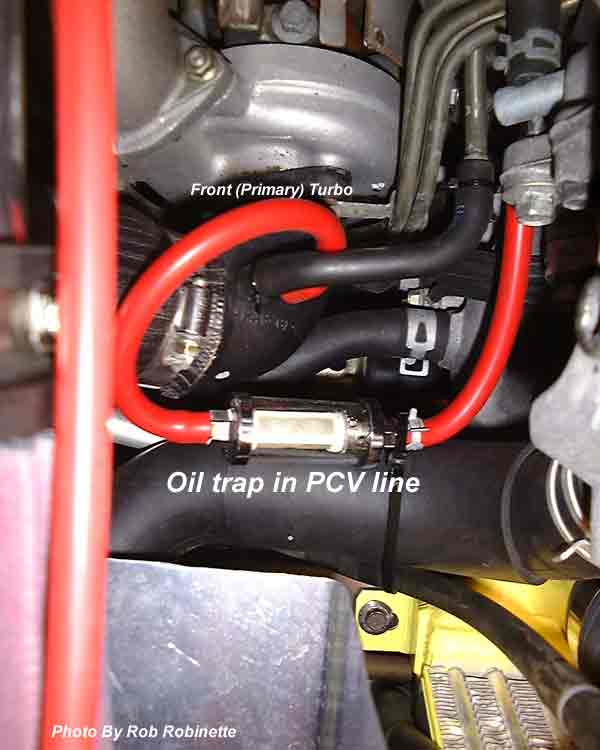How to Remove the PCV Valve
(and Install an Oil Catch Can)
By Rob Robinette
The Positive Crankcase Ventilation (PCV) valve is a one-way (check) valve
that takes blow-by gasses from the engine's crankcase and feeds it into the extension
manifold where it is sucked into the engine and burned. When the manifold is pressurized
(under boost) the PCV valve prevents pressurized air from flowing into the crankcase. If
the PCV valve sticks open you will loose some boost, if it sticks closed this mod is
unnecessary.

The 93,94 RX-7 PCV system, the 95 does not have Passage 1; an
optional oil catch can can be spliced into the vacuum line (Passage 2) to
prevent oil ingestion into the turbo and intake (see photo below)
The 93 RX-7 has two paths for blow-by gasses, one through the
PCV valve into the manifold, and one from the oil filler neck to the inlet side of the
primary turbo (which is always under suction). The 95 RX-7 eliminated the PCV valve
(Passage 1 above) and
retained the oil filler neck to turbo inlet path for crankcase ventilation. Performing
this mod will make your car work like the 95 RX-7.
The PCV valve is located between the oil filler neck and the
extension manifold. There's a 5/16 inch rubber line with the plastic PCV valve in it. To
get to the extension manifold connection you will have to unbolt the black plastic
pressure tank that sits in front of the extension manifold. Use pliers to slide the PCV
valve hose clamp down and pull the hose loose from the manifold and oil filler neck. Use
5/16 or 3/8 inch rubber plugs to plug both openings. Put a tie-wrap around the manifold
plug to keep it in place and replace the pressure tank.

In-line fuel filter used as oil catch
You can splice a non-vented catch can into the vent line
that runs from the oil filler pipe to the primary turbo inlet (Passage 2 above).
Attach the bottom of the can to the filler pipe side of the vacuum line and the
top of the can to the turbo inlet side.
You will have to disconnect the lower vacuum hose to
drain the can. A better setup would be a three outlet can; out on top, in in the
middle, and the drain on the bottom of the can. Most catch cans use NPT threaded
hose connections so it’s easy to install vacuum hose nipples that fit the PCV
line.
Rob Robinette
|

